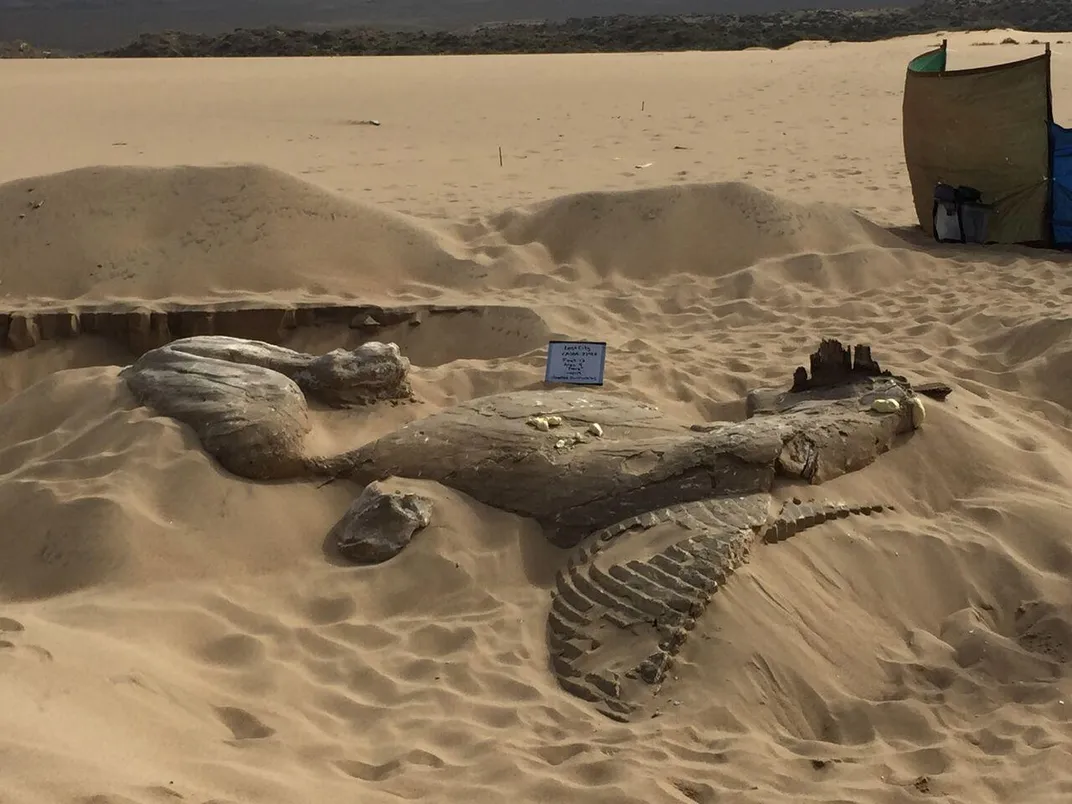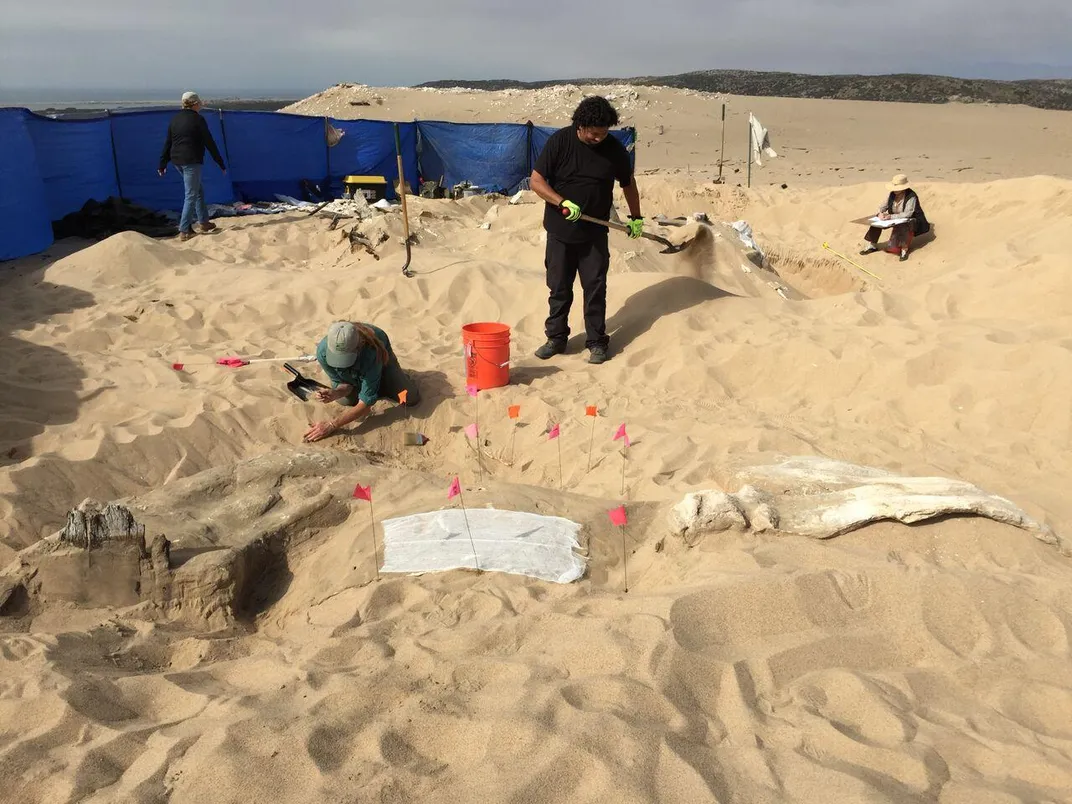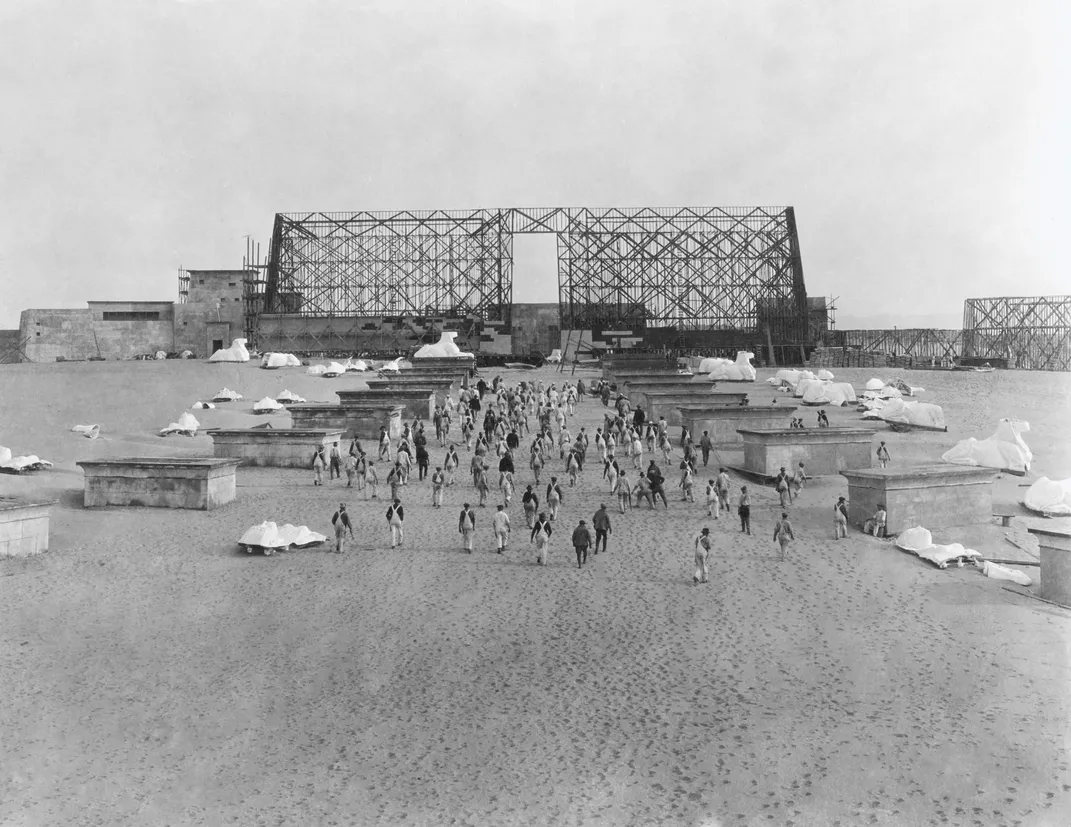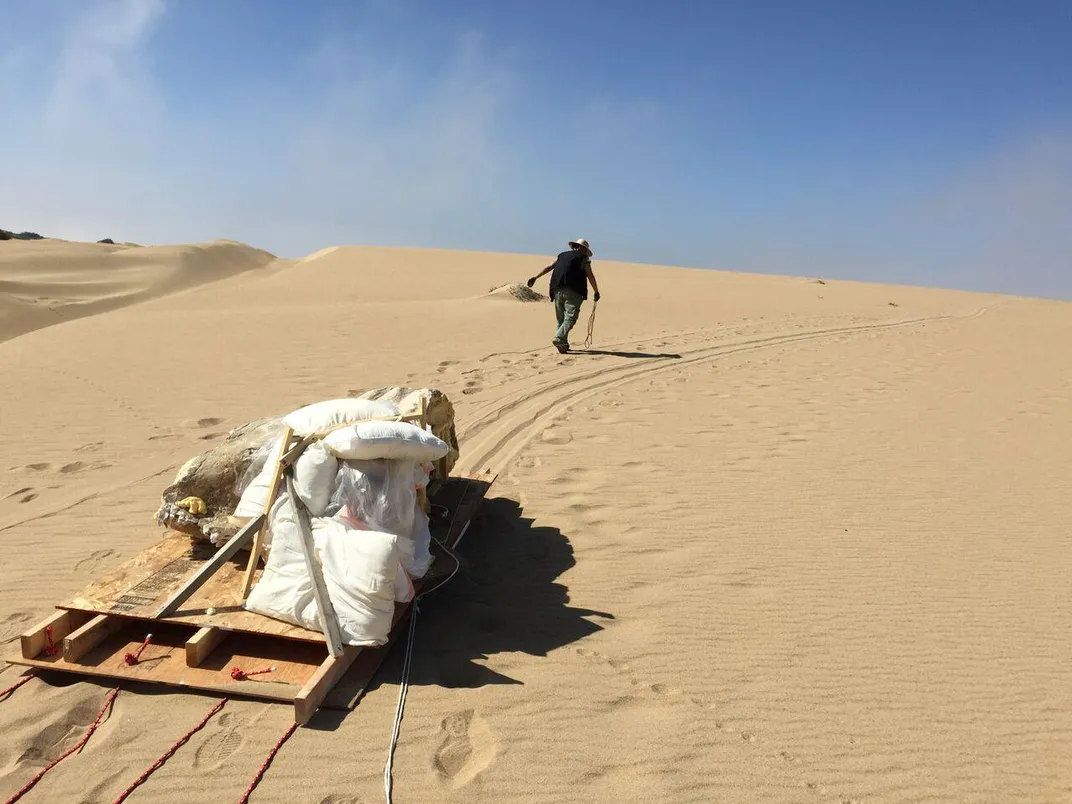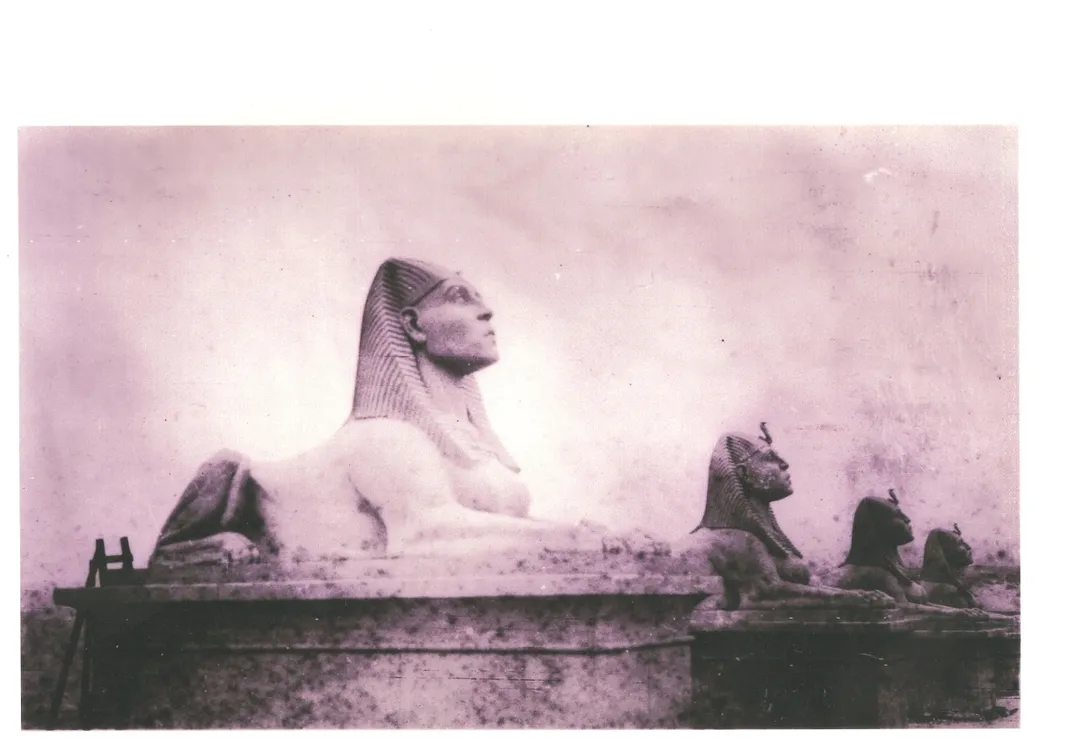There’s a Fake Egyptian City Buried in California
The incredible, nearly forgotten story behind one of Hollywood’s most expensive movie sets
/https://tf-cmsv2-smithsonianmag-media.s3.amazonaws.com/filer/14/ae/14aee149-4944-4077-ba10-585b870449c3/demille_temple.jpg)
Buried in the sands of California lay an 800-foot-long temple, 35-foot-tall statues of Rameses II and a promenade guarded by five-ton sphinxes. This lost metropolis isn't a bizarre Egyptian colony, though. The ruins are all that remains of Cecil B. DeMille's The Ten Commandments set, one of largest and most expensive in Hollywood history, reports David Ferry for Outside. In that pre-computer-generated-effects era, an epic film needed a truly epic set.
DeMille filmed The Ten Commandments north of Santa Barbara along the Guadalupe-Nipomo Dunes, Ferry writes. When filming ended, the already pricey production couldn't afford to dismantle and transport the set — nor did DeMille want to leave it standing, since another filmmaker could swoop in to use it on the cheap. As legend has it, the director chose instead to dynamite and bulldoze the whole thing.
Sixty years later, a filmmaker named Peter Brosnan decided to find the site of DeMille's lost city. In 1990, after years of searching, he partnered with archaeologist John Parker to survey the site with ground-penetrating radar, reports Sarah Linn for KCET. (The project was partially supported with Smithsonian funds.) Brosnan discovered that DeMille's set was still there—sphinxes and all—hidden beneath the dunes.
Because those dunes are home to the western snowy plover, though, Brosnan had to spend years petitioning for permission to excavate the site. It wasn't until the fall of 2014, Ferry writes, that Ten Commandments relics were finally dug out from the sand. An anonymous donor helped fund the excavation, which discovered one of DeMille's sphinxes in the same place where it stood during filming, writes Laura Geggel for Livescience.
However, the plaster used to make the sphinx was extremely fragile, reports the Los Angeles Times' Hailey Branson-Potts. "It was like working with a hollow chocolate rabbit," Doug Jenzen, executive director of the Guadalupe-Nipomo Dunes Center, where the sphinx was found, tells the Times. "These were built to last two months during filming in 1923, and these statues have been sitting out in the elements since then." To preserve the sphinx, which is now on display at the Dunes Center, it was sprayed with epoxy and filled with stabilizing foam.
Unfortunately, funding ran out before another sphinx could be dug up — and, as Jenzen tells Ferry, the rest of DeMille's set may not last much longer: "It's disappearing so fast," he says. "Archeologists originally thought it'd last until 2090—but every time we go out, more is gone."
